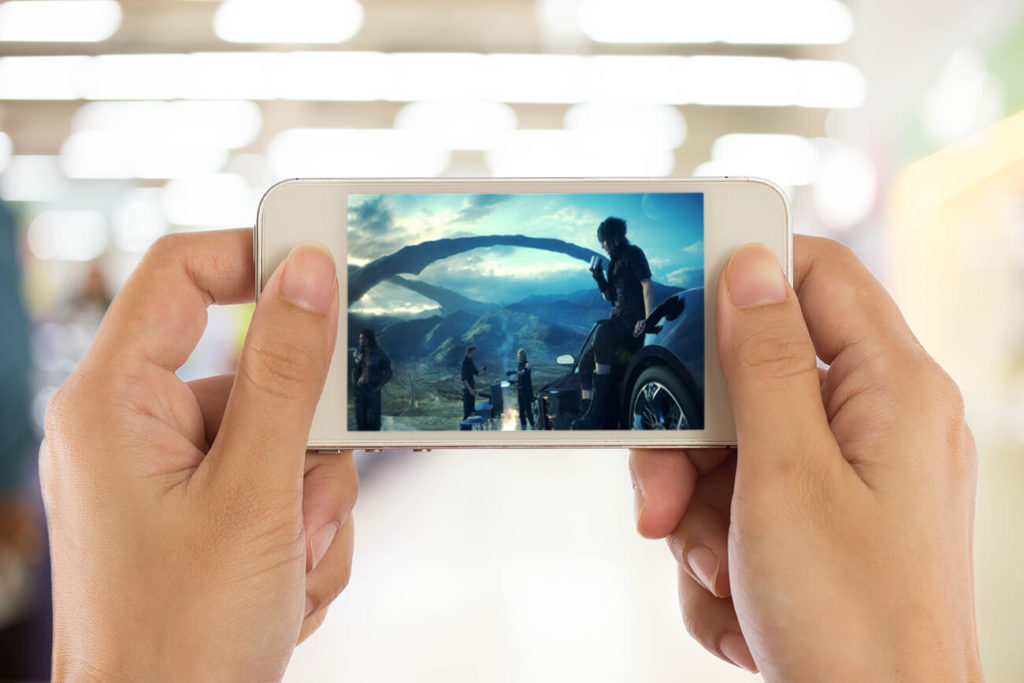Last year, mobile games brought in $40.6 billion worldwide—more than any other interactive entertainment medium, but there’s no guarantee that you’ll be the next Candy Crush. Mobile monetization platform, Tapjoy has just released some data that can help marketers learn more about this lucrative audience. “The Changing Face of Mobile Gamers: What Brands Need to Know” reveals insights about mobile gaming behavior, such as how they view themselves, what kind of games they prefer and where the urge to play strikes the most (surprisingly, it’s not the bathroom).
Who plays mobile games? About 1.9 billion people, Tapjoy reports—but if you think most of those are teenagers, you’re wrong. The largest age group is made up of consumers 55 and over, followed by consumers ages 25-to-34 (21 percent) and 35-to-44 (19 percent). Children aged 13-to-17 only make up 8.05 percent of mobile gamers, while ages 18-to-24 was slightly higher at 13.56 percent, behind 25-to-34-year-olds at 20.7 percent.
Women represent the majority of mobile gamers, making up 63 percent of the total player base. Despite this revelation, 72 percent of the women surveyed said that they do not consider themselves a “gamer” even though 59 percent of women said they play games at least ten times per week. In fact, mobile gamers are extremely active, Tapjoy observed. The vast majority of them—69 percent—said they play at least three to five times per day, while 71 percent of respondents play for an hour or more every day, and 21 percent play for more than three hours a day.

It turns out that to consumers, mobile gaming is about more than just killing time. Tapjoy asked consumers how they felt while playing mobile games compared to social apps and the differences are stark. At 59 percent, consumers are twice as likely to say they feel relaxed when playing mobile games than they are when using social apps like Facebook or Twitter. Users also said they feel more focused (35 percent vs 11 percent), happier (34 percent vs 21 percent), and more engaged (35 percent vs 20 percent) on gaming apps than social networking apps. Also, those status updates about your break-up aren’t as interesting as you may think—consumers are 2.4 times more likely to feel bored on social apps than gaming apps, and 60 percent more likely to feel stressed.
Tapjoy observed that the most popular mobile titles are more similar to board games than what you might find on a console. Case in point, the Shooting category was least popular among mobile gamers at just eight percent. Puzzle games are by far the most popular category, played by 59 percent of respondents, followed by Strategy (38 percent), Trivia (33 percent) and Casino/Card (27 percent). Among the least popular games were Player-vs.-Player (15 ) and Sports (11 percent).
If you had to guess where the most mobile gaming takes place, what would you say—the bathroom? The subway? Well, mobile gamers like to multitask, it seems, because 70 percent responded, “in front of the TV.” Just under TV time was “relaxing at home” at 67 percent (admittedly, that could include the bathroom) and 59 percent play “before bed.” Seventeen percent admit to playing at work . . . you know who you are.
“When designing their digital advertising strategies, it’s critical that brands take into consideration the activities that consumers are engaged in at the time and how they make them feel,” said Shannon Jessup, chief revenue officer of Tapjoy in the report. “There are nearly 2 billion mobile gamers in the world, and the unique state of mind consumers have when playing games on their smartphones or tablets represents an incredible opportunity for brands to truly connect with consumers.”

